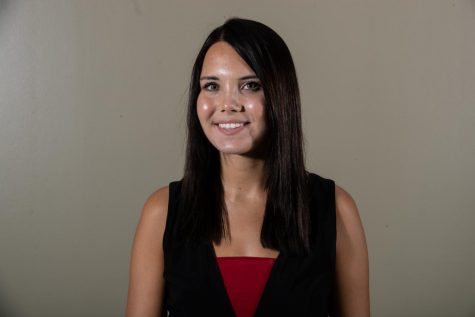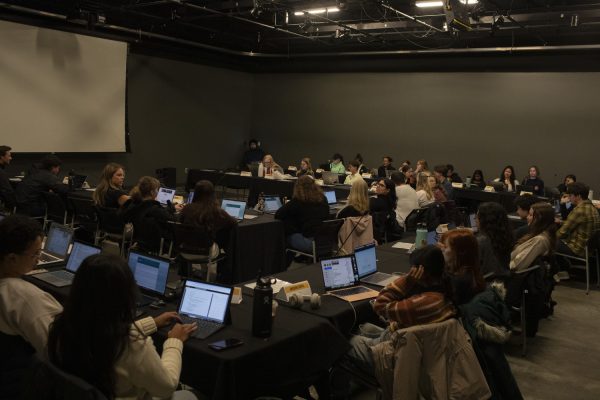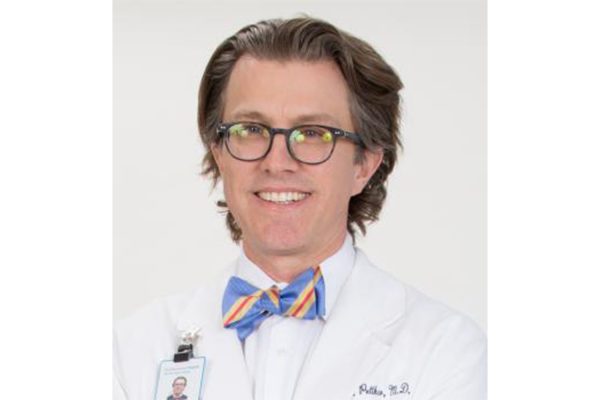UI researchers develop technology to diagnose a cause of blindness
University of Iowa researchers have developed IDxDR, a first of its kind device, that uses artificial intelligence to diagnose diabetic retinopathy, a major cause of blindness.
UI Professor Michael Abramoff sits for a portrait in the UIHC Pomerantz Family Pavilion on Aug. 29. Abramoff founded the IDx company to create IDx-DR, a technology used to detect diabetic retinopathy.
September 7, 2018
University of Iowa researchers have developed a device to diagnose a major cause of blindness.
New technology developed by the researchers will use artificial intelligence to help diagnose diabetic retinopathy. The medical device, called IDxDR, is the only one of its kind that is approved by the Food and Drug Administration.
Diabetic retinopathy is a complication that can eventually cause blindness after damage to the retina. The American Optometric Association states that early detection and treatment can limit the potential for significant vision loss.
Michael Abramoff, the UI Robert C. Watzke Professor of ophthalmology and visual sciences, founded the Coralville-based company IDx in 2010. He has been working on the technology for around 20 years, he said. The project received FDA approval on April 11, 2018.
“Usually with diabetes, complications are what is bad,” he said. “In this case, the retina gets damaged early on — people don’t know this — when it’s treatable. But when it goes on and on, they go blind.”
IDxDR is an artificial-intelligence system that is combined with a camera using AI that helps the system tell if diabetic retinopathy is detected or not.
“[When diabetic retinopathy] is detected, a doctor is referred,” Abramoff said. “It does not treat; it only detects [it].”
He said that because the technology is autonomous, it does not require a doctor’s presence to make the decision.
“If you treat it early, you can save a lot of problems,” he said. “Various diseases can be [avoided]. We want to bring this technology to retail clinics [and] to where the patients are.” The whole purpose of the company is to make the technology available to the 30 million with diabetes. We want this to be as widely used as possible — Michael Abramoff, founder of IDxDR
Stephen Russell, UI Dina J. Schrage Professor of macular degeneration research, is the co-founder of the company.
“IDx is a going further than any other recent image analysis spinoff at the university,” he said. “It was organized in 2010, it has gone from a concept to a startup to now a company with an FDA approved product.”
IDxDR is paired with a camera that automatically centers on the pupil and focuses, he said. It then transmits the image to the server for analysis and generates a report.
“[Other technologies] often require most ophthalmologists to have trained certified photographers in their office, but with this technology, it can be used by high-school level education,” Russell said.
IDxDR pairs the image with an algorithm that does not require expertise in taking the ocular photographs or interpretive expertise, he said.
“There are a lot of screening programs that have been developed in the U.S. and elsewhere,” he said. “But a lot of other programs analyze human reader. It autonomously uses AI.”
The technology gives doctors the ability to diagnose eye diseases at primary level, such as at a doctor’s office, said Stephanie Lynch, a resident in the Ophthalmology Department.
“Especially in rural areas, where a lot of orthopedic patients will be now be able to get an automatic quick reading of their eye,” she said.
IDxDR is more robust and less prone to misdiagnose information than any other technologies used to diagnose retinopathy, she said.
“The whole purpose of the company is to make the technology available to the 30 million with diabetes,” Abramoff said. “We want this to be as widely used as possible.”
















